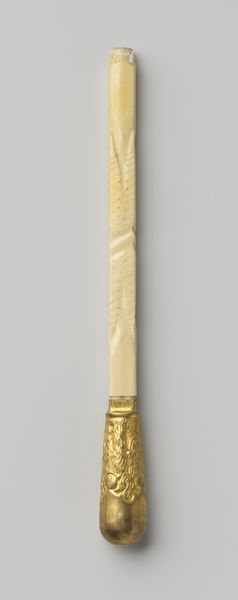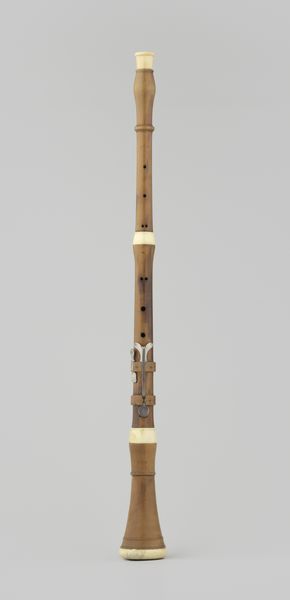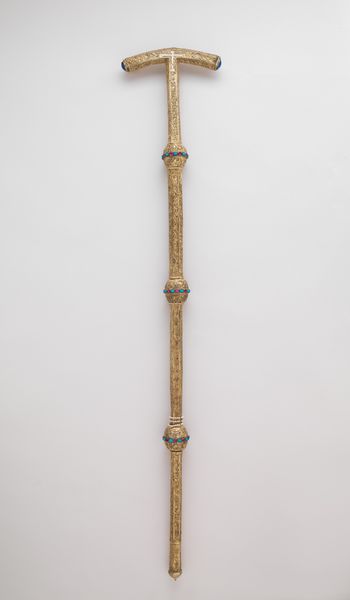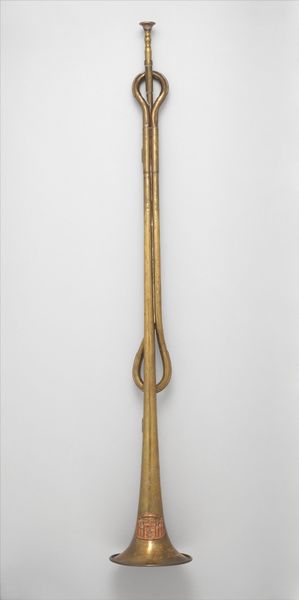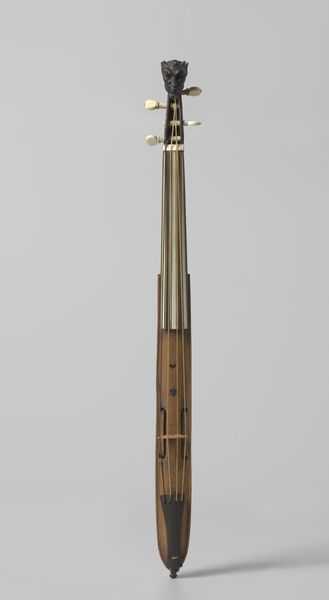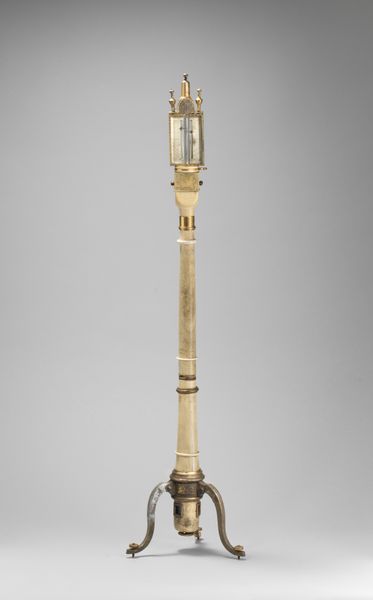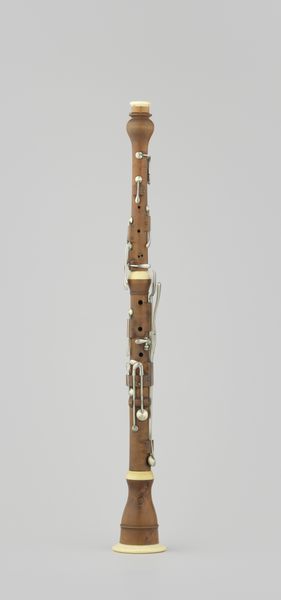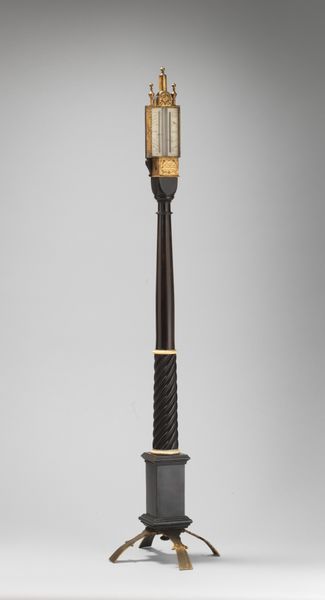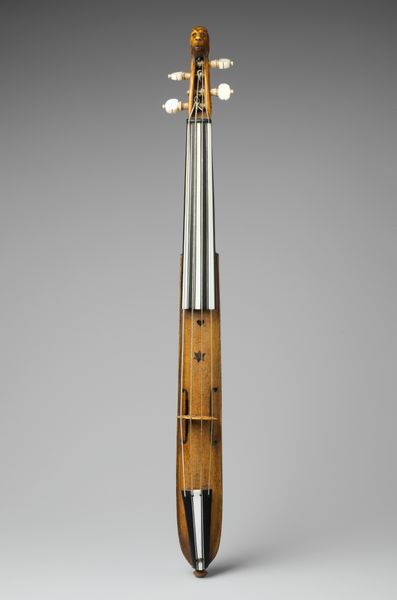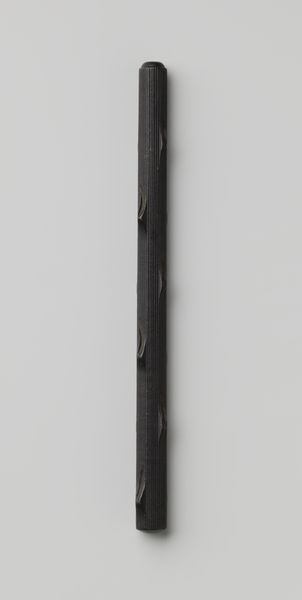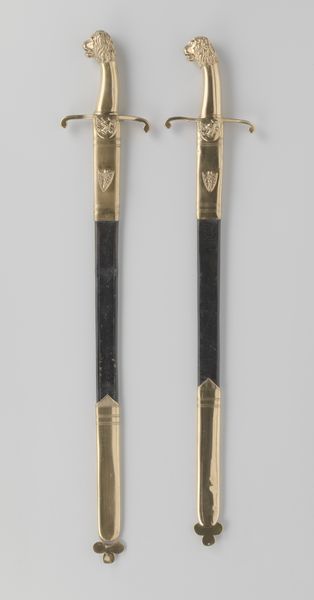
sculpture, wood
#
baroque
#
sculpture
#
geometric
#
sculpture
#
wood
#
decorative-art
Dimensions: 35-1/2 x 2-1/2 x 3-3/4 in. (90.2 x 6.4 x 9.5 cm)
Copyright: Public Domain
Editor: So, here we have the Pillar Barometer, a 17th-century wood sculpture now residing at the Metropolitan Museum of Art. I’m immediately drawn to the contrast between the fluted and spiraled sections; the object’s overall symmetry lends a feeling of classical order, yet these stylistic differences are intriguing. What do you see in this piece? Curator: Its geometric construction, though overtly functional, demonstrates a deep understanding of sculptural principles. Notice the clean lines and the considered division of space. Semiotically, the pillar form, often associated with strength and stability, is subverted by its function as a barometer, a measure of ever-changing atmospheric conditions. Editor: Subverted? Curator: Indeed. The object’s very design highlights a fascinating interplay between permanence and ephemerality. The fluting gives a kind of stasis whereas the spiraling introduces movement and complexity. Observe, also, the subtle shift in texture between these sections. How does this variation inform your reading? Editor: I hadn't really thought of the textural aspect. So, you're saying the variations, these deliberate contrasts, they underscore the purpose of the barometer, to measure the fluctuating nature of the atmosphere? Curator: Precisely. The interplay of rigid structure and fluid form emphasizes a sense of potential energy, ever responsive to external forces. Consider this object in its entirety and reflect on what we have considered. Editor: I guess I initially viewed it as just a historical artifact, but now I appreciate the artist's intent. Thank you for guiding me to see the sophisticated dialogue embedded within the object’s materiality and construction.
Comments
No comments
Be the first to comment and join the conversation on the ultimate creative platform.
